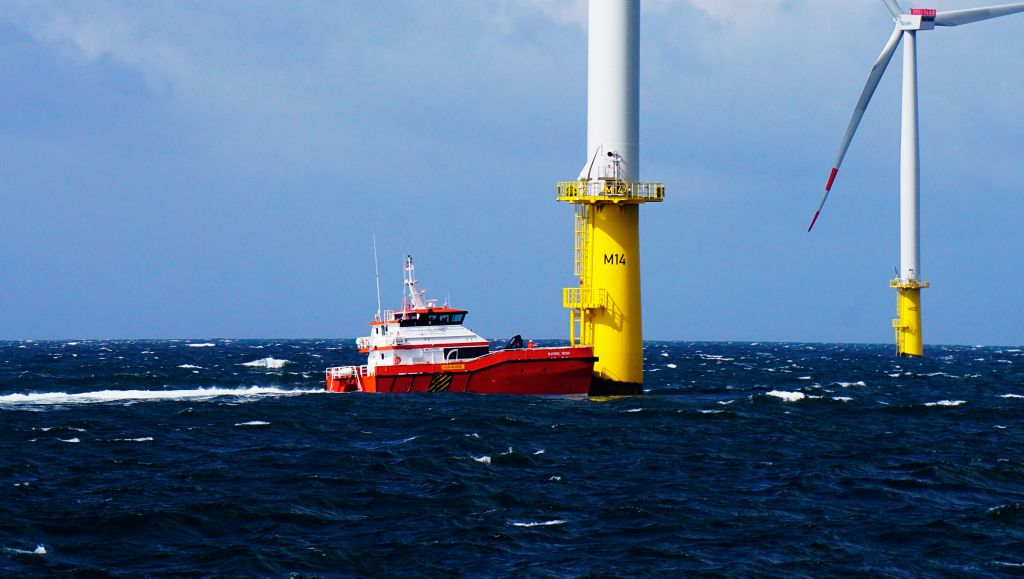Designed to offer customers a totally different service


“Our vessels are carrying technicians and equipment long distances to and from the offshore windfarms so fuel consumption is very important to us and our clients. The vessels also require bollard thrust. This is very important when pushing on to a wind turbine to keep the bow fixed to the boat landing irrespective of the sea conditions,” says Tom Mehew, Director of Njord Offshore.
The company is involved in windfarming and transports service technicians and material to offshore windfarms in countries including the UK, Germany, Denmark and the Netherlands. In 2015, Njord Offshore launched four new crew vessels, all equipped with four Volvo Penta IPS900s, which have forward-facing, twin counter-rotating propellers and individually controlled drives under their hulls.
“Maneuvering onto an offshore turbine in rough seas is tricky and you need to have a responsive propulsion system that can maneuver the vessel with precision. Volvo Penta’s IPS has succeeded in combining maneuverability with efficiency,” says Tom Mehew.
Wind farming is a growing market. The sector involves gigantic areas in remote offshore locations.
“Many vessels like Njord’s are going to be needed,” says Gerard Törneman, Sales Project Manager at Volvo Penta Marine Commercial.
He and his colleague, Björn Säljö, Vice President Product Management, are fully aware of the new offshore windfarms that are being planned worldwide. They envisage enormous business potential for Volvo Penta and, not least, for IPS.
For many years, Volvo Penta’s IPS has enjoyed a powerful position in the leisure-boat segment and, since 2013; the system has also been available for heavier boats with more demanding operating profiles. With its unique design – with forward-facing propellers and a complete driveline –Volvo Penta’s IPS is the optimal solution for vessels servicing windfarms.
“In this business, an hourly charge is made for each service technician, so it’s important to be able to drive quickly, with a high level of fuel efficiency. Volvo Penta’s IPS offers fuel consumption that is 30 per cent lower than that of traditional boat engines. This also cuts carbon emissions,” says Björn Säljö.
In 2014, some 60 Volvo Penta IPS units were sold in the heavy-duty segment and the target for 2016 is 150 engines. A large percentage of them will be installed in boats used for windfarming, people transportation, piloting and surveillance.
“We are aiming to capture 30 per cent of the workboat market for the offshore wind in our range,” says Gerard Törneman.
To realize this objective, Volvo Penta is working on extending its marketing. In addition to establishing business relationships with boatyards and boat designers, it has become increasingly important to work directly with operators like Njord Offshore.
“This is a highly competitive industry and applications are not the only interesting thing. Operators want to keep a check on the big picture, how much it costs to run the boat. The uptime requirements are also rigorous and this makes our total solutions interesting.
As Volvo Penta has designed everything from the propeller to the hub of the steering wheel, we are able to offer our customers a totally different service compared with our competitors,” says Björn Säljö.
Facts Volvo Penta IPS
Last year Volvo Penta’s IPS (Inboard Performance System) drive system celebrated a decade in production. Since its introduction in 2005, 17,000 engines have been sold for some 1,100 different boat models. Available in different engine sizes, from 300 bhp to 900 bhp. The larger engines are used for patrol boats and passenger ships, for example.